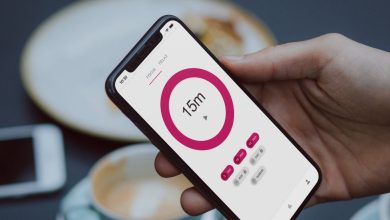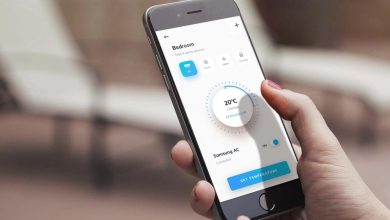Tame Digital Chaos Daily with Productivity

In the contemporary world, the relentless surge of digital information, constant notifications, and myriad online platforms has created an environment often described as digital chaos. From overflowing email inboxes and sprawling cloud drives to endless social media feeds and fragmented communication channels, our digital lives are frequently characterized by disarray, distraction, and an overwhelming sense of being perpetually behind. This chaotic digital landscape not only saps our productivity and mental energy but also contributes significantly to stress, decision fatigue, and a diminished capacity for focused, high-quality work. The ability to navigate this digital maelstrom with grace and efficiency has become a critical skill, separating those who thrive from those who merely survive.
The insidious nature of daily digital chaos lies in its gradual accumulation. Each unread email, every lingering browser tab, every scattered file adds to a growing sense of mental burden, making it difficult to locate essential information, prioritize tasks, or even begin meaningful work. We find ourselves constantly reacting to digital pings rather than proactively engaging with our goals, leading to a pervasive feeling of being overwhelmed and losing control over our digital domains. This fragmented state prevents us from truly leveraging the power of technology to our advantage, instead turning it into a source of constant friction.
This comprehensive guide will delve deep into the pervasive problem of daily digital chaos, exploring its multifaceted causes, detailing a wide array of actionable strategies for effectively taming it, and offering practical advice for cultivating a more organized, intentional, and streamlined digital life. By the end of this article, you will be equipped with the insights and tools to systematically Conquer Daily Digital Chaos, reclaiming your attention, sharpening your focus, and transforming your digital environment into a powerful engine for productivity, creativity, and mental clarity.
The Anatomy of Digital Chaos

Before we can effectively tame digital chaos, it’s crucial to understand its various manifestations and the ways it impacts our cognitive functions and productivity.
A. Information Overload
The sheer volume of data, articles, emails, and notifications we receive daily far exceeds our brain’s capacity to process it all, leading to a feeling of overwhelm.
B. Fragmented Communication
Conversations scattered across email, multiple chat apps (Slack, Teams, WhatsApp), and social media make it difficult to track decisions, follow threads, and ensure everyone has the same information.
C. Digital Clutter
Disorganized files across local drives and cloud services, cluttered computer desktops, and an abundance of unorganized bookmarks create friction and waste time searching for essential items.
D. Context Switching
The constant need to switch between different applications, tabs, and tasks due to digital interruptions drains cognitive energy and reduces our ability to focus deeply.
E. Notification Addiction
The addictive nature of notifications, driven by dopamine loops, compels us to constantly check devices, pulling us out of focused work.
F. Tool Bloat
Using too many different apps and platforms for similar functions can paradoxically create more inefficiency than it solves, adding complexity rather than reducing it.
Strategic Pillars for Conquering Daily Digital Chaos
Effectively tackling digital chaos requires a multi-faceted approach that spans organization, automation, and intentional habit formation.
A. Inbox Mastery: Taming the Email Beast
Email is often the largest source of daily digital chaos.
- A. Implement Inbox Zero: Aim to process your entire inbox daily. This doesn’t mean replying to everything, but rather:
- Delete: Instantly delete anything irrelevant (spam, old notifications).
- Archive: Move emails you don’t need to act on but might need later to an archive.
- Reply/Action: Respond to quick emails immediately (2-minute rule). For longer tasks, move them to your task manager.
- Defer: Use email snooze features or move to a “Later” folder for non-urgent items.
- B. Unsubscribe Ruthlessly: Regularly unsubscribe from newsletters and promotional emails you no longer read. Use tools like Clean Email or Unroll.me.
- C. Batch Email Checking: Avoid constantly checking email. Designate specific times (e.g., 2-3 times a day) for processing your inbox.
- D. Use Email Filters and Rules: Set up automatic filters to categorize incoming emails (e.g., move newsletters to a specific folder, flag emails from key clients).
B. Digital File & Cloud Organization: Creating Order from Disorder
A well-structured file system is crucial for efficiency.
- A. Standardized Folder Structure: Create a consistent, logical folder structure for all your digital files (documents, images, projects) both locally and in cloud services (Google Drive, Dropbox, OneDrive). Use clear, concise naming conventions.
- B. Cloud Storage Consolidation: Try to consolidate your files into one primary cloud storage service if possible, or at least ensure a clear strategy for what goes where if you use multiple.
- C. Regular Decluttering: Schedule weekly or monthly “digital tidying” sessions to delete old files, organize new ones, and empty your downloads folder.
- D. Desktop Minimalism: Keep your computer desktop as clean as possible. Only keep files you are actively working on, and move completed items to their proper folders.
C. Communication Streamlining: Clarity Over Clutter
Manage how and where you communicate to reduce fragmentation.
- A. Consolidate Communication Channels: Where possible, try to centralize team communication to one or two primary platforms (e.g., Slack or Microsoft Teams, not both plus email plus WhatsApp for work).
- B. Utilize Project-Specific Channels/Threads: Within communication apps, use dedicated channels or threads for specific projects or topics to keep conversations organized and searchable.
- C. Asynchronous Communication Best Practices: Understand when real-time communication (calls, video) is necessary versus when asynchronous methods (email, written messages) are more efficient, especially for non-urgent updates.
- D. Clear Expectations: Set expectations with colleagues about your availability and response times on different platforms to manage interruptions.
D. Leveraging Tools for Focus and Automation: Smart Digital Management
Employ technology to fight digital chaos.
- A. Task Management Systems: Use a dedicated task manager (Todoist, Asana, Trello) to capture all your to-do items, deadlines, and project steps. This gets tasks out of your head and out of scattered notes.
- B. Distraction Blockers: Employ browser extensions or apps (Freedom, StayFocusd) to block distracting websites and apps during focused work periods.
- C. AI Automation: Use tools like Zapier or IFTTT to automate repetitive digital tasks (e.g., saving email attachments to a specific cloud folder, logging meeting notes into a CRM).
- D. Calendar Time-Blocking: Schedule specific blocks of time in your calendar for focused work, email processing, and even digital decluttering. Treat these blocks as non-negotiable.
E. Mindset & Habits: The Human Element of Control
Ultimately, mastering digital chaos comes down to intentional habits.
- A. Digital Detox Rituals: Implement daily or weekly mini-digital detoxes. Put your phone away during meals, don’t check work email after hours, or designate a “no-screen” evening.
- B. Single-Tasking: Resist the urge to multitask. Focus on one digital task at a time, completing it before moving to the next.
- C. The “Two-Minute Rule”: If a digital task (responding to an email, organizing a file) takes less than two minutes, do it immediately. This prevents small items from accumulating.
- D. Regular Review and Reflection: Periodically review your digital habits and organization system. What’s working? What’s still chaotic? Adjust your strategies as needed.
Implementing Your Digital Chaos Conquest Plan
Transforming a chaotic digital life into an organized one requires a structured and persistent approach.
A. Start with a “Digital Audit Day”
Dedicate an hour or two to systematically reviewing your digital landscape.
- A. How many unread emails?
- B. How many open browser tabs?
- C. Where are your critical files located?
- D. Which apps/websites are your biggest time sinks (use screen time trackers)?This audit provides a baseline and highlights priority areas.
B. Tackle Email First (High Impact, Immediate Relief)
Given its central role in daily work, start with email.
- A. Aggressively unsubscribe from non-essential lists.
- B. Implement basic filters.
- C. Practice Inbox Zero for 30 minutes.
C. Implement One Digital Organization System
Choose one area—e.g., your computer desktop, your cloud files, or your bookmarks—and commit to organizing it using a standardized structure. Don’t try to organize everything at once.
D. Set Up Distraction Blockers for Core Work Times
Identify your most important work blocks and set up website/app blockers during these times. Start with a short duration (e.g., 90 minutes) and gradually extend.
E. Adopt a Task Management Tool (If Not Already Using One)
Migrate all your scattered to-do lists from notes, emails, and your memory into a single, reliable task management system.
F. Practice “Digital Closure” Daily
Before ending your workday, create a ritual: close all unnecessary tabs, clear your desktop, and process your inbox. This provides a clean slate for tomorrow.
G. Communicate Your Digital Boundaries
Inform colleagues, friends, and family about your efforts to reduce digital chaos. For example, “I’ll be offline from Slack between 1 PM and 3 PM for focused work.” This manages expectations and reduces interruptions.
H. Schedule Weekly Digital Maintenance
Dedicate 15-30 minutes each week to “digital housekeeping”—reviewing files, unsubscribing from new spam, updating your task manager, and reflecting on your digital habits.
Conclusion
In an era defined by overwhelming digital saturation, the ability to Conquer Daily Digital Chaos is not merely a nicety; it is a fundamental imperative for sustained productivity, mental well-being, and ultimately, a more purposeful life. The relentless tide of information, notifications, and fragmented communication, if left unchecked, can erode our capacity for deep work, foster pervasive stress, and leave us feeling constantly behind. This guide has illuminated the path to transforming this digital maelstrom into a streamlined, efficient, and profoundly empowering environment.
By systematically addressing the root causes of digital disarray—from mastering the email beast with Inbox Zero strategies and structuring file systems with meticulous organization, to streamlining communication channels and leveraging intelligent tools for focus and automation—you embark on a journey of digital mastery. This multi-faceted approach empowers you to move beyond simply reacting to the digital world to proactively shaping it, ensuring that technology serves as a powerful enabler rather than a constant source of friction. The cultivation of intentional habits, such as regular digital detoxes, single-tasking, and consistent digital maintenance rituals, reinforces this transformation, creating a resilient defense against the pervasive noise.
The benefits of this profound shift are far-reaching and transformative: a dramatic surge in productivity and output quality, a noticeable reduction in stress and decision fatigue, enhanced mental clarity, and a renewed sense of control over your time and attention. Ultimately, by systematically taming daily digital chaos, you are not just optimizing your workflow; you are reclaiming your cognitive space, freeing up valuable mental energy for creativity, strategic thinking, and meaningful engagement with both your work and your personal life. It is an investment in your present effectiveness and your long-term cognitive health, paving the way for a more focused, fulfilling, and intentionally lived digital existence.




